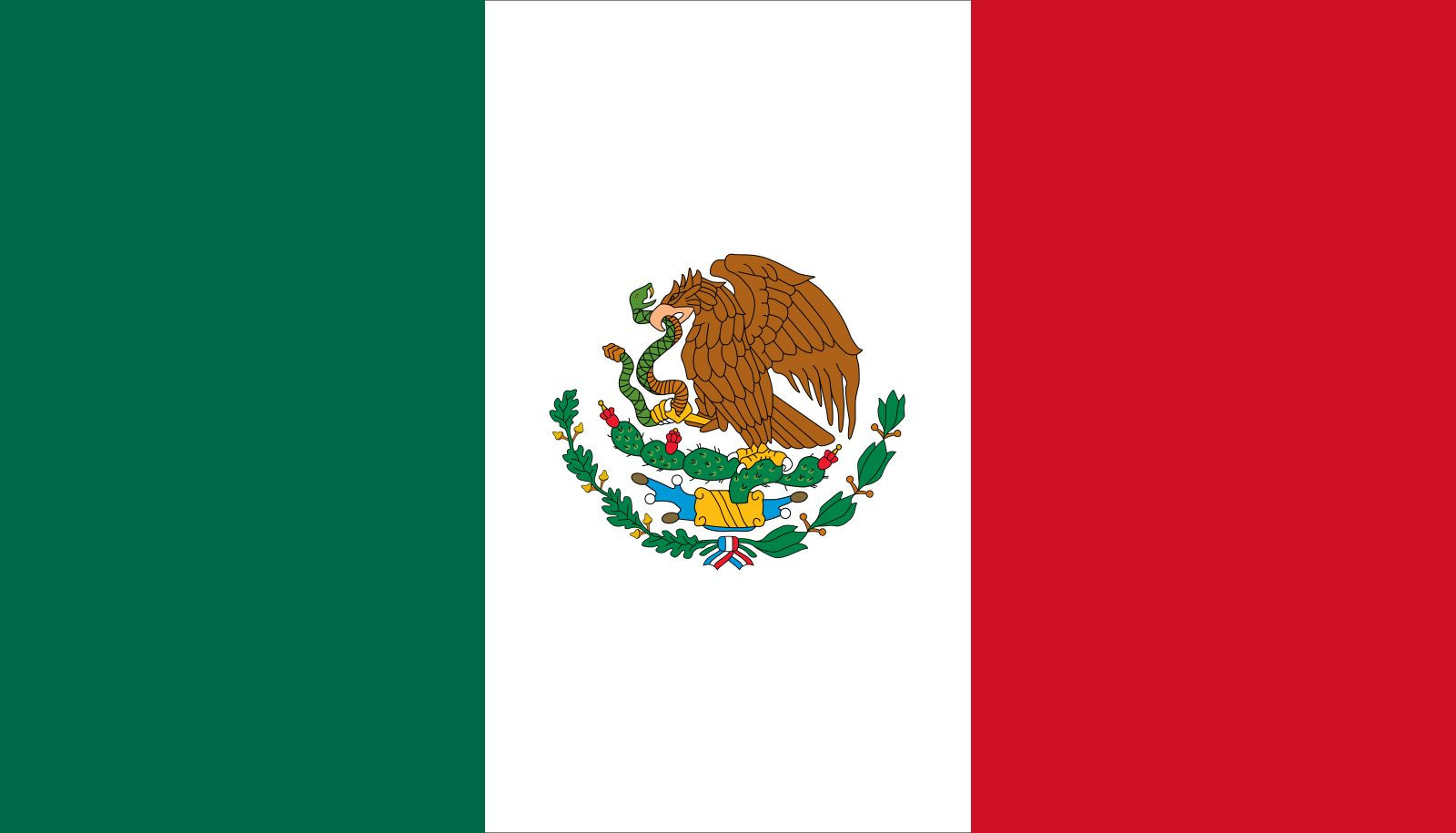The Mexican Flag, a vibrant emblem of national pride, is instantly recognizable with its bold green, white, and red vertical stripes and a powerful central coat of arms. This tricolor banner is more than just a national symbol; it’s a tapestry woven with threads of Mexican history, cultural identity, and deep-seated symbolism. With a width-to-length ratio of 4 to 7, the flag’s proportions are precisely defined, just like the rich narrative it represents.
 Flag of Mexico
Flag of Mexico
The story of the mexican flag is intrinsically linked to the nation’s arduous journey to independence. While various banners fluttered during the struggle for freedom from Spanish rule, it was the 1821 Iguala Plan that cemented the green-white-red tricolor as the official standard. Though some speculate about the influence of the French Tricolor on its design, the colors adopted by Mexico were imbued with uniquely Mexican significance. Green was chosen to represent independence itself, a nod to the nation’s hard-won sovereignty. White was designated to symbolize the Roman Catholic faith, a deeply ingrained aspect of Mexican culture and identity. Finally, red stood for the union, reflecting the aspiration for harmony and unity among Mexicans, as outlined in the “Three Guarantees” of the Iguala Plan. This political agreement was a crucial compromise, enabling Mexico to break free from Spain while upholding the prominence of Roman Catholicism and the existing social hierarchy where the Creole elite held sway over the mixed-race population and the indigenous majority.
At the heart of the mexican flag lies the coat of arms, a striking depiction of Mexico’s foundational myth rooted in ancient Aztec legend. The emblem vividly portrays the pivotal moment in 1325 when the forefathers of the Aztec empire, guided by prophecy, discovered the destined location for their capital, Tenochtitlán, now known as Mexico City. The scene showcases a majestic eagle perched on a prickly pear cactus, firmly rooted in a rock emerging from water, clutching a serpent in its beak. This powerful imagery has been reinterpreted artistically across different eras and political regimes in Mexico, serving as a potent symbol of Mexican nationality and evolving political ideologies. Historically, during Mexico’s periods as an empire (1821-1823 and 1864-1867), the eagle on the flag was adorned with a crown, signifying imperial rule. The contemporary iteration of the coat of arms features a wreath composed of oak and laurel branches, bound together by a ribbon in the national colors of green, white, and red. This definitive version of the mexican flag was officially adopted on September 17, 1968, solidifying its place as a timeless emblem of Mexican identity and heritage.

